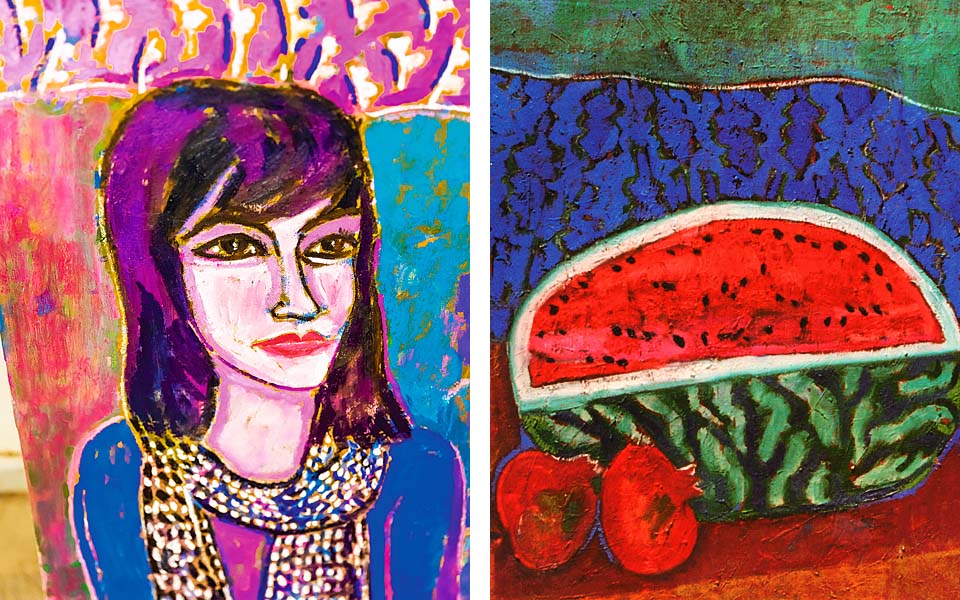LUIS OROZCO
A MYKONIAN FROM MEXICO
“Home is where you’re happy and loved. To me, home is Mykonos. I’m a Mykonian from Mexico,” says artist Luis Orozco, or “Louisakos” as the locals fondly call him. We meet around lunchtime in Chora, at the Cine Manto open-air cinema, where he is holding an exhibition titled “Beyond Mykonos”. I see ants crawling around his work and ask him whether he minds. “Ants have a right to art as well,” he replies.
Orozco, aged 85, has had a fascinating life: he studied at the National School of Fine Arts in Mexico and fought in the Korean War, before borrowing just enough money to follow a group of friends to Mykonos after falling under the spell of Henry Miller’s The Colossus of Maroussi. “I set sail from New Orleans on a Liberty cargo ship, holding a Greek textbook in one hand and a guitar in the other. We traveled for 40 days. At night, I’d listen to the songs of the Greek sailors; by the time we reached Piraeus, I had learned all the words.”
It was 1960 when he first stepped foot on Mykonos, then an 11-hour trip from Piraeus on the ferry Kyra Despina. His friends left once their vacation was over, but he was held back by what he describes as: “Two lights: A Mykonian woman who didn’t want me in the end, and the light of the island, which is ideal for a painter.” Even though he has stayed true to the island motifs – the sea, fishing boats, alleys, stray cats – his canvases overflow with color, from vibrant green and fuchsia to purple and turquoise. In fact, he remembers that one art critic had accused him of introducing the colors of Mexico to Mykonos, which she described as a “white dove.”
“He remembers that one art critic had accused him of introducing the colors of Mexico to Mykonos, which she described as a “white dove”
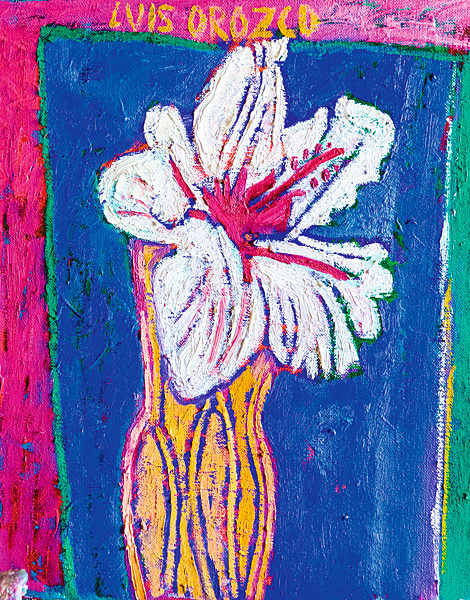
© Dionysis Kouris
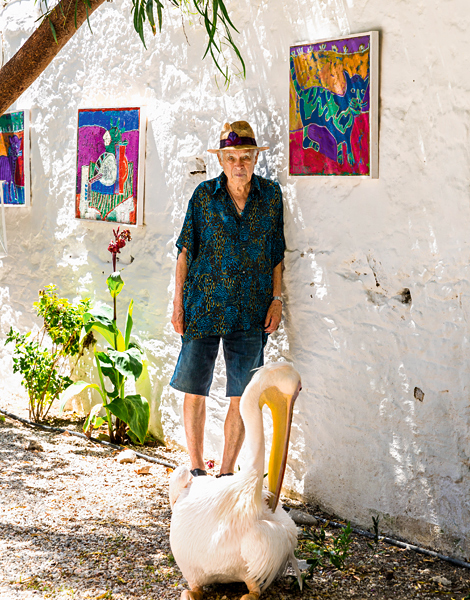
© Dionysis Kouris
“But I saw color on the island,” he says. “I saw deep-green cypresses, red stone walls pulsating with heat; I saw the colors transmitted by the magical light of Delos every dusk onto the Mykonian balconies and doors. Mykonos may be a white dove to the visitor, but it is not so to the artist.”
For someone who has traveled the world, Orozco has managed to find a full and happy life in such a small place. He has flourished as an artist, holding exhibitions abroad, and his personal life has been full, too. He has married three times, has two sons – one is an artist in the United States and the other married a Greek and lives on Mykonos where he works as a sound designer – and a granddaughter who loves music. He never turned his back on the island and has always “promoted” it in his work, though he did in fact try living elsewhere with his first wife, first in Denmark, then in Spain. “That’s when I realized that I would rather be on this island, in this dream, this architectural treasure,” he says. “You feel comfortable even in the narrowest alleyway. Back then, doors were kept open at night, everyone waved to each other, the tourists were well-educated and fishermen sang in the dark. I have never regretted my choice to live here. You get what you dare. I took risks and survived, and was fortunate.”
Like the island he has made his home, Orozco exudes light, even in adversity, such as the recent loss of his wife. “My paintbrushes have frozen and I can’t paint anymore.” But even though he no longer captures the colors that he loves, he still cherishes the magic they work over the landscape he calls home.
INFO
To contact the artist or see samples of his work: • Tel (+30) 697.246.4857 • www.luisorozcomykonos.weebly.com
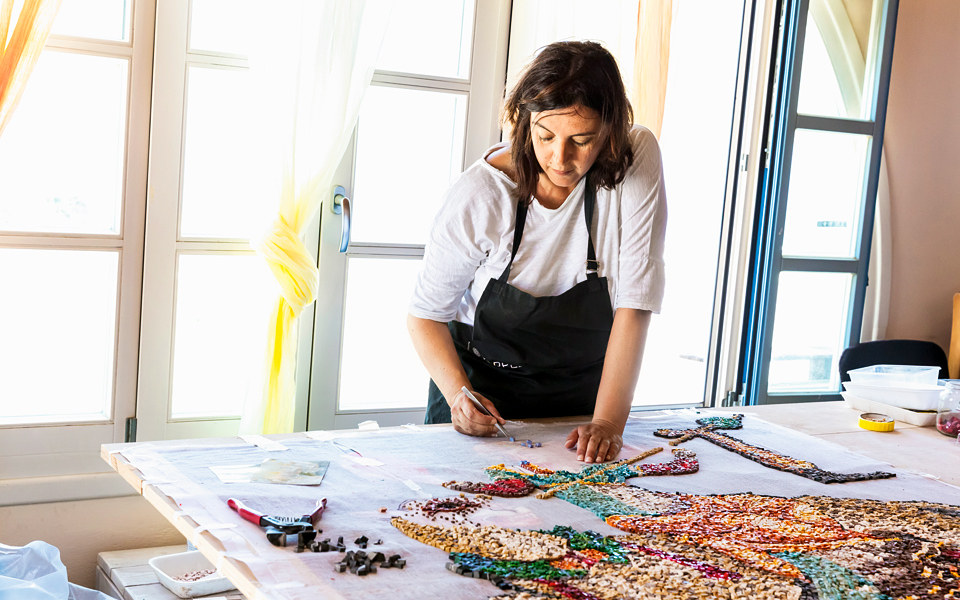
© Dionysis Kouris
IRENE SYRIANOU
REVIVING AN ANCIENT ART
Slip away from the madding crowds on Chora’s high street and duck into the small square of Aghios Vlassis, where you can hear the tap-tap-tapping of a chisel on stone from the open door of Irene Syrianou’s workshop. Surrounded by hundreds of colorful stones, each waiting their turn to be glued with flour paste onto the gauze, the Mykonian artist tells me about how she discovered mosaic art.
“I was a resident guard on the island of Delos and, for 10 years, I would wake up every day among 350 mosaics; I simply fell in love with them,” she says, describing her work on the island-wide archaeological site just off Mykonos. “Delos is truly the ‘capital’ of this ancient art, which flourished in the Hellenistic period, but then disappeared for centuries. I want to be one of the artists to help bring it back.”
Irene began learning under the tutelage of Nikos Tolis, the head of the Greek Mosaic Association and an art restorer, and then went on to hone her craft in Athens before returning to Mykonos and opening her own workshop. Her work, which visitors can see her executing on site, includes exact replicas of the Delos mosaics. She works with marble, local limestone and Venetian or Russian glass.
“My most well-known mosaics are probably those of the dolphins and the rosettes, which I copy exactly, even in regards to the number of tiles,” she says. Her biggest seller, however, is a small mosaic depicting Tanit, an ancient Carthaginian goddess, whose image is believed to ward off evil.
Irene has been teaching the art of mosaic making to adults and children on the island for the past 17 years, hoping to keep the craft alive. “I am,” she says, “gradually acquiring fellow companions on this journey. I feel as though I am carrying on a tradition.”
INFO
Asteria: Aghios Vlassis Square, Chora • Tel. (+30) 22890.278.22, (+30) 697.735.5079 • www.art-mosaic.gr
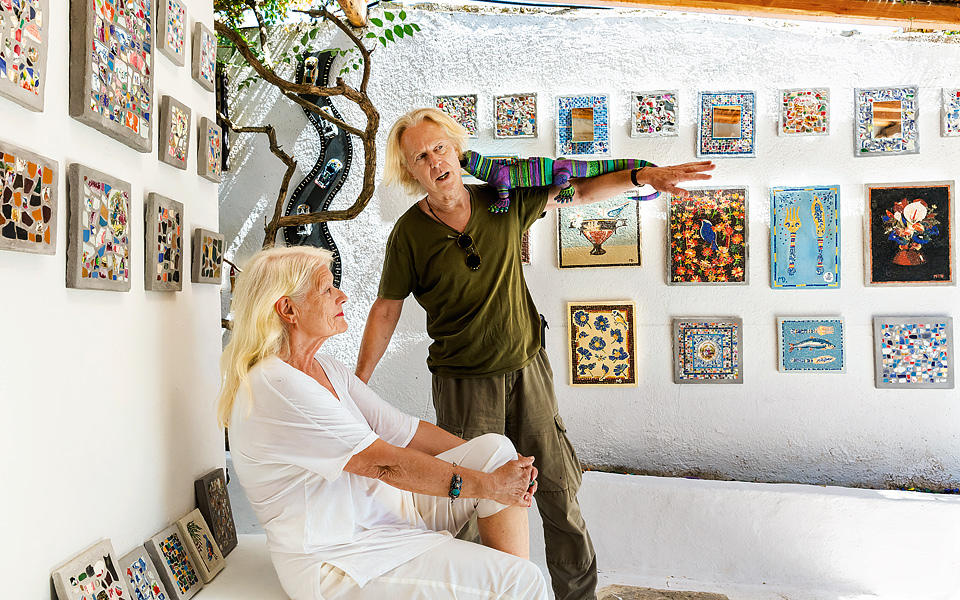
© Dionysis Kouris
MONIKA DERPAPA & RICHARD JAMES NORTH
A MYKONIAN LOVE AFFAIR
Richard was a well-traveled Londoner and up-and-coming artist in the US back in the 1970s, holding solo shows and selling to important buyers (his work graces the central offices of both Playboy and the Chicago Stock Exchange). Monika was born in Dresden and studied in Hamburg, where in 1962 she met her first husband, George Derpapas, an important proponent of magical realism. They had two sons. One passed away at a young age; the other, Michalis, is an artist. She moved to Greece in 1966, bought a summer home in Mykonos and settled permanently on the island in 1986, after opening a bar here in 1981.
She was separated; he had just suffered the painful loss of his father and was looking to start life afresh. The Greek islands seemed like the perfect place for that, far from rainy Seattle where Richard was living when he decided to come to Greece. The couple met in Monika’s bar in 1984; for him, it was love at first sight. “I was interested in buying the bar; who would have guessed that it came part and parcel with the owner,” he says jokingly.
They ran the bar together for the first few years they were together and business went well; every night was a party. The artists inside them, however, wanted more. “We didn’t want to get old serving drinks.” So they turned the bar into the Studio Gallery and have been showcasing their work here for the past 30 years. Their art is inspired by the island. Monika makes colorful mosaics out of marble and porcelain; Richard paints, using acrylic on wood. In their free time, Monika takes Greek dancing classes, they tend to the garden (“if you let it go, it will turn into a jungle”) at their home above Chora, or they drive their vintage Fiat to Ai-Yiannis Beach or to the Irish pub Dublin in Aghios Stefanos. For 11 months of the year – they also spend a few weeks in Athens – they live a simple life here that they would not change for the world.
“The studio is our winter haven. You open the windows and beauty just pours in,” says Monika. “Mykonos is an endless source of energy, and I’m upset every time we leave. I’m addicted.”
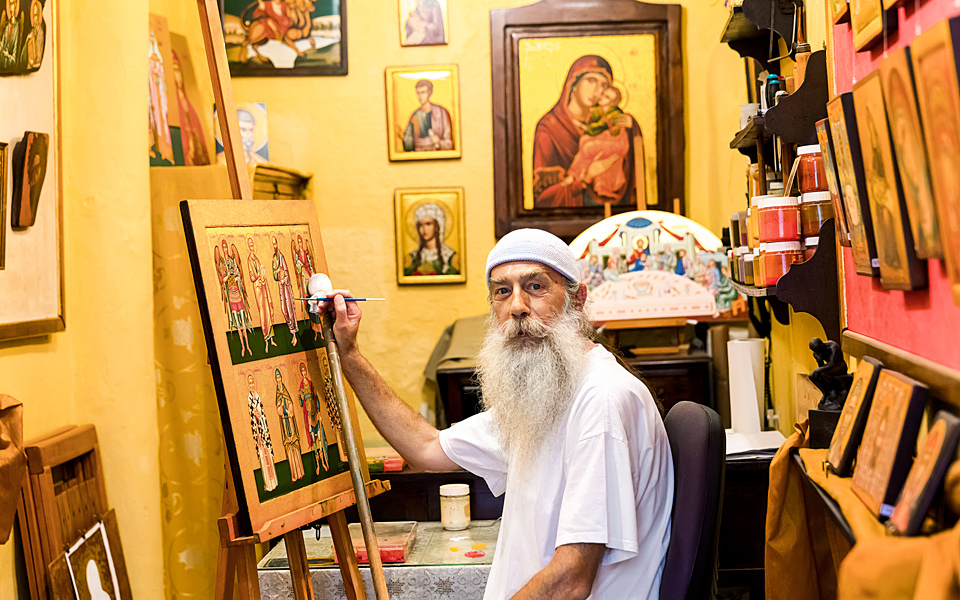
© Dionysis Kouris
MERCOURIOS DIMOPOULOS
WHEN THE SAINTS GO MARCHING IN
All of the saints depicted in the icons of Mercourios Dimopoulos have pleasant, oddly familiar faces, exuding serenity and spiritual beauty. Perhaps it’s reflective of the artist’s own happiness at where he finds himself. The self-taught Athenian icon painter – nicknamed the “Saint of Mykonos” – fell in love with his grandmother’s island on his first visit and has lived here since 1987, in a 50m² house near Faros.
“I make just enough money to get by,” Mercourios says. “But I have the luxury of going to bed every night listening to nothing louder than the wind and of waking up to a gorgeous view of the Aegean.” Every day, he trades the quiet of his home for the solitude of his workshop (called Apocalypsis, or Revelation) tucked away on a small side street in Chora, near the area known as Little Venice, where he works without being distracted by the crowds.
Following the painstaking process of sanding down the wood, sealing it with chalk from Bologna and then gilding it in 22-karat gold leaf, Mercourios creates replicas of icons from the Cretan, Russian and Ionian schools, which he sells to tourists, as well as to locals who hang them either in their homes or in privately owned churches.
“There are more churches than beach bars in Mykonos,” says the artist, who has a deep sense of the island’s spiritual aura, which, he says, is most apparent in the winter, “when the air smells of rain, and the landscape itself changes.”
“I really like it when my icons evoke a sense of devoutness in those who see them. They are an excellent medium to help concentration. They can speak to your heart and move you to tears, just like a photograph of, say, a dearly departed father.”
INFO
Apocalypsis: Aghios Vlassis Square, Chora • Tel. (+30) 22890.242.67 • Blog: mercourios.blogspot.gr

